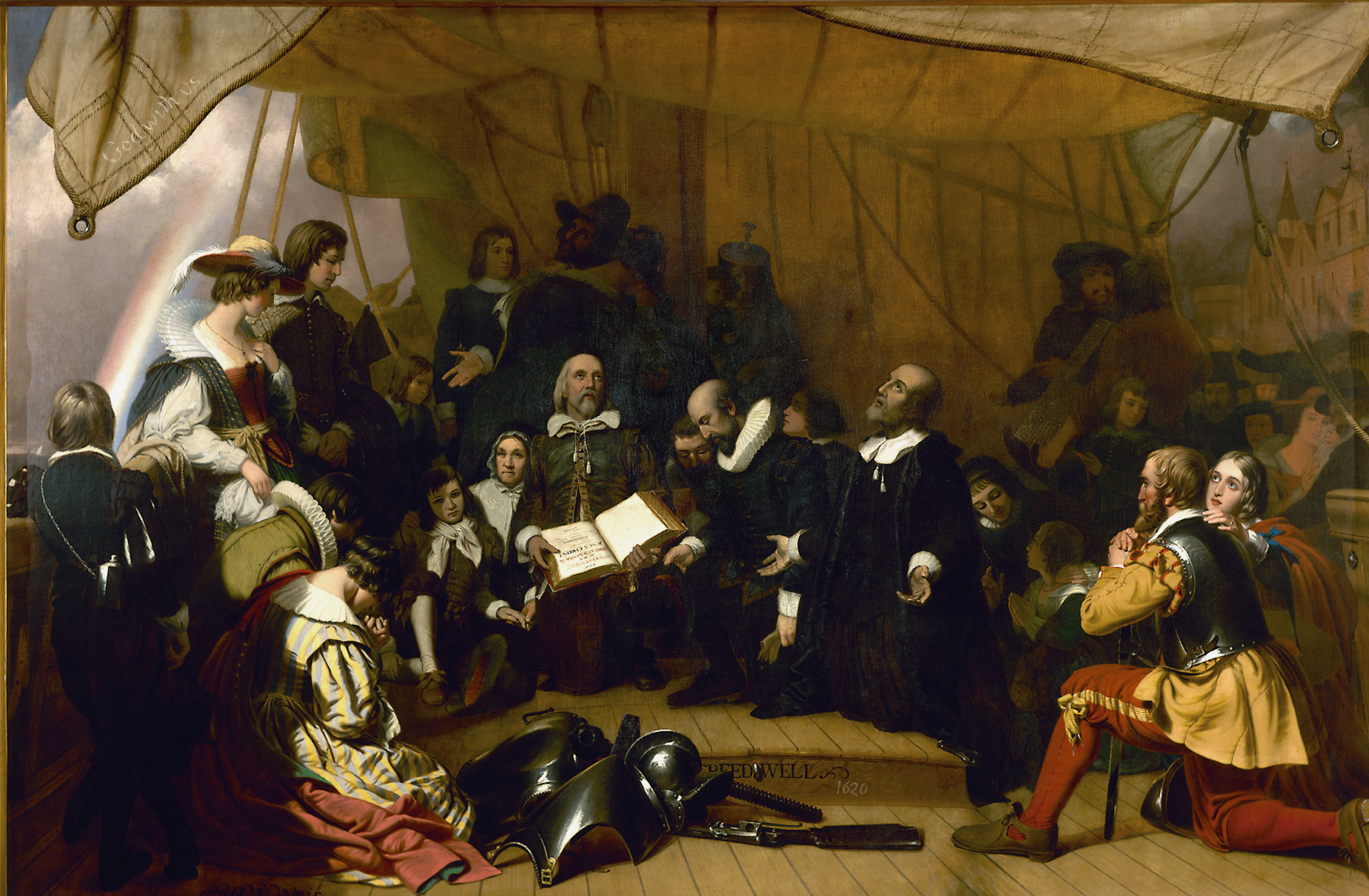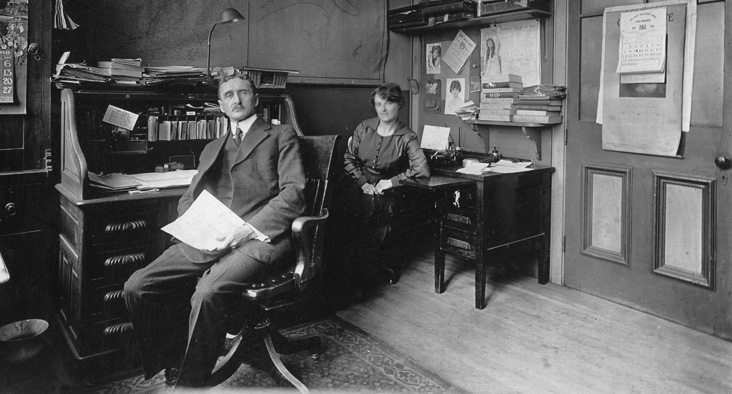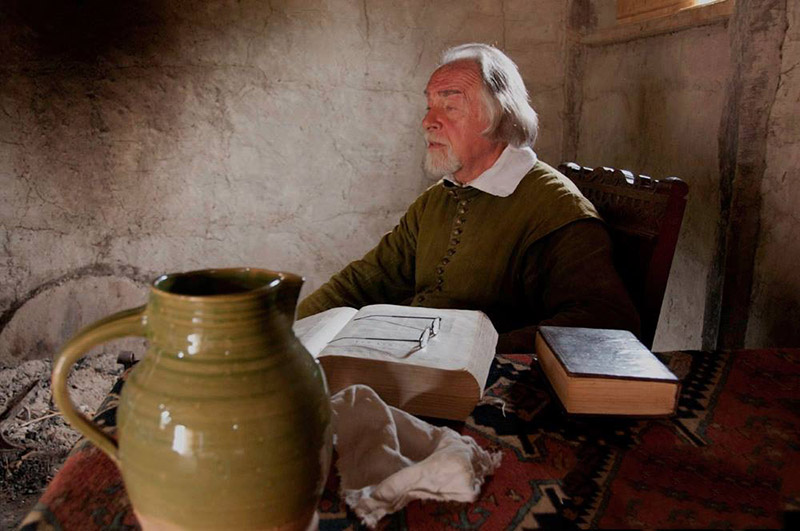|
William Bradford (1590–1657)
William Bradford ( 19 March 15909 May 1657) was an English Puritan Separatist originally from the West Riding of Yorkshire in Northern England. He moved to Leiden in the Dutch Republic in order to escape persecution from King James I of England, and then emigrated to the Plymouth Colony on the ''Mayflower'' in 1620. He was a signatory to the Mayflower Compact and went on to serve as Governor of the Plymouth Colony intermittently for about 30 years between 1621 and 1657. He served as a commissioner of the United Colonies of New England on multiple occasions and served twice as president. His journal ''Of Plymouth Plantation'' covered the years from 1620 to 1646 in Plymouth. ''The fast and thanksgiving days of New England'' by William Deloss Love, Houghton, Mifflin and Co., Cambridge, 1895. [...More Info...] [...Related Items...] OR: [Wikipedia] [Google] [Baidu] |
John Carver (Plymouth Colony Governor)
John Carver was one of the Pilgrims who made the '' Mayflower'' voyage in 1620 which resulted in the creation of Plymouth Colony in America. He is credited with writing the Mayflower Compact and was its first signer, and was also the first governor of Plymouth Colony.Eugene Aubrey Stratton, ''Plymouth Colony: Its History and People, 1620-1691,'' (Salt Lake City: Ancestry Publishing, 1986), p. 259''A genealogical profile of John Carver,'' (a collaboration of Plimoth Plantation and New England Historic Genealogical Society accessed 2013-04-21) Life in Leiden Little is known about Carver's ancestry or early family life. Jeremy Bangs notes that Carver and his wife Mary were members of the Walloon church in Leiden, Holland on February 8, 1609. The Flemish Walloon community was fleeing religious persecution in their homeland (then part of the Spanish Netherlands, now split between Belgium and France), as were the Puritan separatists who came to Holland from England around 1607 ... [...More Info...] [...Related Items...] OR: [Wikipedia] [Google] [Baidu] |
Richard Clyfton
Richard Clyfton (or Clifton) (died 1616) was an English Separatist minister, at Scrooby, Nottinghamshire, and then in Amsterdam. Clyfton is known for his connection with the Pilgrims – the early settlers of the Plymouth Colony in present-day Massachusetts, USA. Life Clyfton was born around 1553 near the Nottinghamshire village of Babworth but left to attend the University of Cambridge, a focus of English puritanism. He returned home an ordained minister and was named rector of All Saints' Church, Babworth in 1586. With a 'living' he was able to marry. He and his wife Anne had three sons and three daughters, all born at Babworth. The three daughters died in infancy or childhood, but the three Clyfton sons survived. Clifton died at Amsterdam on 20 May 1616, and is buried in the Zuiderkerk. The church where he is buried is now an information centre. Ministry Clifton was instituted to the vicarage of Marnham, near Newark-on-Trent, on 12 February 1585 and on 11 July 158 ... [...More Info...] [...Related Items...] OR: [Wikipedia] [Google] [Baidu] |
Dutch Republic
The United Provinces of the Netherlands, commonly referred to in historiography as the Dutch Republic, was a confederation that existed from 1579 until the Batavian Revolution in 1795. It was a predecessor state of the present-day Netherlands and the first independent Dutch people, Dutch nation state. The republic was established after seven Dutch provinces in the Spanish Netherlands Dutch Revolt, revolted against Spanish Empire, Spanish rule, forming a mutual alliance against Spain in 1579 (the Union of Utrecht) and declaring their independence in 1581 (the Act of Abjuration). The seven provinces it comprised were Lordship of Groningen, Groningen (present-day Groningen (province), Groningen), Lordship of Frisia, Frisia (present-day Friesland), Lordship of Overijssel, Overijssel (present-day Overijssel), Duchy of Guelders, Guelders (present-day Gelderland), lordship of Utrecht, Utrecht (present-day Utrecht (province), Utrecht), county of Holland, Holland (present-day North Holla ... [...More Info...] [...Related Items...] OR: [Wikipedia] [Google] [Baidu] |
Archbishop Of York
The archbishop of York is a senior bishop in the Church of England, second only to the archbishop of Canterbury. The archbishop is the diocesan bishop of the Diocese of York and the metropolitan bishop of the province of York, which covers the northern regions of England (north of the river Trent, Trent) as well as the Isle of Man. The archbishop's throne (''cathedra'') is in York Minster in central York, and the official residence is Bishopthorpe Palace in the village of Bishopthorpe outside York. The current archbishop is Stephen Cottrell, since the confirmation of bishops, confirmation of his election on 9 July 2020. History Roman There was a bishop in Eboracum (Roman Britain, Roman York) from very early times; during the Middle Ages, it was thought to have been one of the dioceses established by the legendary Kings of Britain, legendary Lucius of Britain, King Lucius. Bishops of York are known to have been present at the councils of Council of Arles, Arles (Eborius) ... [...More Info...] [...Related Items...] OR: [Wikipedia] [Google] [Baidu] |
John Robinson (pastor)
John Robinson (1576–1625) was the pastor of the "Pilgrim Fathers" before they left on the ''Mayflower''. He became one of the early leaders of the English Separatists called Brownists, and is regarded (along with Robert Browne (Brownist), Robert Browne and Henry Barrowe, Henry Barrow) as one of the founders of the Congregational church, Congregational Church. Early life Robinson was born at Sturton le Steeple in Nottinghamshire, England, between March and September 1576, this range of dates deduced by comparing two records at Leiden (Leyden), Netherlands, that give his age at the time of the event. The village was also the birthplace of the martyr of 1546, John Lassells, and the separatist and Baptist John Smyth (English theologian), John Smyth. He entered Corpus Christi College, Cambridge, Corpus Christi College at the University of Cambridge in April 1592. He received his Bachelor of Arts degree in 1596. In May 1598 he was admitted a Fellow of his college and ordained a An ... [...More Info...] [...Related Items...] OR: [Wikipedia] [Google] [Baidu] |
James I Of England
James VI and I (James Charles Stuart; 19 June 1566 – 27 March 1625) was King of Scotland as James VI from 24 July 1567 and King of England and Ireland as James I from the union of the Scottish and English crowns on 24 March 1603 until his death in 1625. Although he long tried to get both countries to adopt a closer political union, the kingdoms of Scotland and England remained sovereign states, with their own parliaments, judiciaries, and laws, ruled by James in personal union. James was the son of Mary, Queen of Scots, and a great-great-grandson of Henry VII, King of England and Lord of Ireland, and thus a potential successor to all three thrones. He acceded to the Scottish throne at the age of thirteen months, after his mother was forced to abdicate in his favour. Although his mother was a Catholic, James was brought up as a Protestant. Four regents governed during his minority, which ended officially in 1578, though he did not gain full control of his governmen ... [...More Info...] [...Related Items...] OR: [Wikipedia] [Google] [Baidu] |
Scrooby
Scrooby is a small village on the River Ryton in north Nottinghamshire, England, near Bawtry in South Yorkshire. At the time of the 2001 census it had a population of 329, in 2011 the count was 315 and by the 2021 census this had fallen further to 307 residents. Until 1766, it was on the Great North Road so became a stopping-off point for numerous important figures including Queen Elizabeth I and Cardinal Wolsey on their journeys. The latter stayed at the Manor House briefly, after his fall from favour. In 958, King Edgar granted an estate including land at ''Scroppenþorpe'', including an area now in the modern Scrooby, to Oscytel, Archbishop of York. The Manor House belonged to the Archbishops of York and so was sometimes referred to as a palace. (A nearby former farmhouse is still called Palace Farm.) At the end of the sixteenth century, the house was occupied by William Brewster, the Archbishop's bailiff, who was also postmaster. His son, also named William, took that ... [...More Info...] [...Related Items...] OR: [Wikipedia] [Google] [Baidu] |
Postmaster
A postmaster is the head of an individual post office, responsible for all postal activities in a specific post office. When a postmaster is responsible for an entire mail distribution organization (usually sponsored by a national government), the title of Postmaster General is commonly used. Responsibilities of a postmaster typically include management of a centralized mail distribution facility, establishment of letter carrier routes, supervision of letter carriers and clerks, and enforcement of the organization's rules and procedures. The postmaster is the representative of the Postmaster General in that post office. In Canada, many early places are named after the first postmaster. History In the days of horse-drawn carriages, a postmaster was an individual from whom horses and/or riders (known as postilions or "post-boys") could be hired. The postmaster would reside in a "post house". The first Postmaster General of the United States was the notable founding father ... [...More Info...] [...Related Items...] OR: [Wikipedia] [Google] [Baidu] |
Bailiff
A bailiff is a manager, overseer or custodian – a legal officer to whom some degree of authority or jurisdiction is given. There are different kinds, and their offices and scope of duties vary. Another official sometimes referred to as a ''bailiff'' was the '' Vogt''. In the Holy Roman Empire a similar function was performed by the '' Amtmann''. They are mostly known for being the officer that keeps the order in a court of law and who also administers oaths to people who participate in court proceedings. Britain and Ireland Historic bailiffs ''Bailiff'' was the term used by the Normans for what the Saxons had called a '' reeve'': the officer responsible for executing the decisions of a court. The duty of the bailiff would thus include serving summonses and orders, and executing all warrants issued out of the corresponding court. The district within which the bailiff operated was called his '' bailiwick'', and is even to the present day. Bailiffs were outsiders and free me ... [...More Info...] [...Related Items...] OR: [Wikipedia] [Google] [Baidu] |
William Brewster (Pilgrim)
William Brewster (c. 1566/67 – 10 April 1644) was an English official and ''Mayflower'' passenger in 1620. He became senior elder and the leader of Plymouth Colony, by virtue of his education and existing stature with those immigrating from the Netherlands, being a Brownist (or Puritan Separatist). Life in England William Brewster was born in 1566 or 1567,Stratton, Eugene Aubrey (1986). ''Plymouth Colony: Its History and People, 1620–1691,'' p. 251, Salt Lake City, UT, US: Ancestry Publishing. most probably in Scrooby, Nottinghamshire, England. He was the son of William Brewster and Mary (Smythe) (Simkinson) Brewster and he had a number of step-brothers and step-sisters, including James, Prudence, Henry, George, and Edward Brewster. His paternal grandparents were William Brewster (1510–1558), and Maud Mann (1513–1558).Merrick, Barbara Lambert d., Comp.(2000). ''William Brewster of the Mayflower and His Descendants for Four Generations,'' 3rd Rev. Edn., pp. 1–5, 3 ... [...More Info...] [...Related Items...] OR: [Wikipedia] [Google] [Baidu] |
Roman Catholic
The Catholic Church (), also known as the Roman Catholic Church, is the largest Christian church, with 1.27 to 1.41 billion baptized Catholics worldwide as of 2025. It is among the world's oldest and largest international institutions and has played a prominent role in the history and development of Western civilization. O'Collins, p. v (preface). The church consists of 24 ''sui iuris'' (autonomous) churches, including the Latin Church and 23 Eastern Catholic Churches, which comprise almost 3,500 dioceses and eparchies around the world, each overseen by one or more bishops. The pope, who is the bishop of Rome, is the chief pastor of the church. The core beliefs of Catholicism are found in the Nicene Creed. The Catholic Church teaches that it is the one, holy, catholic and apostolic church founded by Jesus Christ in his Great Commission, that its bishops are the successors of Christ's apostles, and that the pope is the successor of Saint Peter, upo ... [...More Info...] [...Related Items...] OR: [Wikipedia] [Google] [Baidu] |






